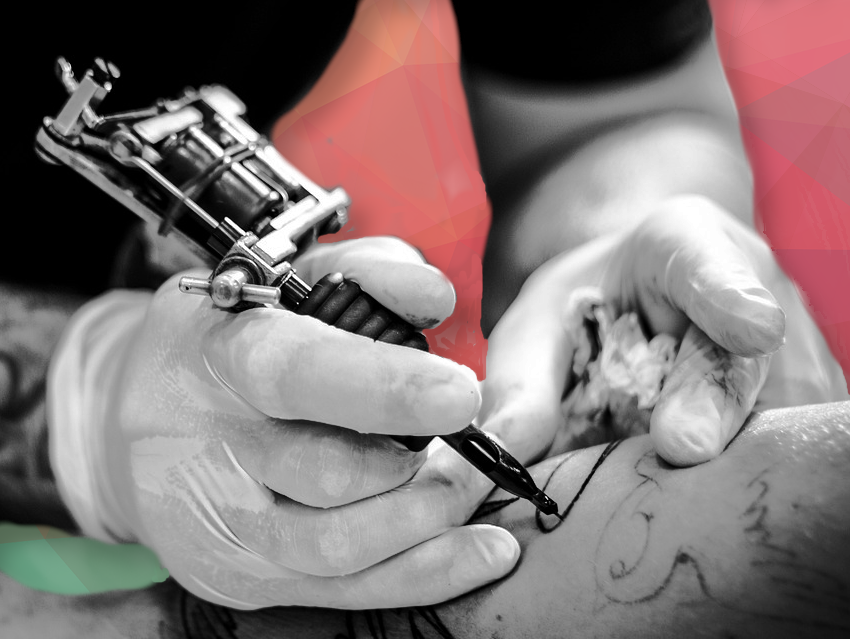About one-fifth of people in industrialized countries are tattooed, potentially putting them at risk of exposure to possible carcinogenic or otherwise harmful substances. Ines Schreiver and colleagues, Federal Institute for Risk Assessment (BfR), Berlin, Germany, have for the first time tracked the exposure and metabolism of the liquid components of tattoo inks in the body within 24 h after tattooing. It has long been known that pigment particles accumulate in the lymph nodes (see, for example, the article mentioned below), but the amount and distribution of the liquid ink components in the body have not been studied until now.
For the study, 24 volunteers each received a tattoo of their choice. The tattooing was done under laboratory conditions at Berlin’s Charité hospital by professional tattoo artists. Each session lasted about three and a half hours on average. Black or red tattoo ink were used.
As most of the potentially harmful tattoo ink ingredients cannot be used in human experimental exposure studies due to their hazard potential, the team added tracer substances (potassium iodide, 4-aminobenzoic acid (PABA), and 2-phenoxyethanol (PEtOH)) to the tattoo inks as hazard-free alternatives. Urine and blood samples were taken before, during, and after tattooing. All tracers or their metabolites were identified in urine; iodide and the PABA metabolite 4-acetamidobenzoic acid (ACD) were identified in plasma.
The study also measured how much tattoo ink was used per session. Researchers weighed the ink bottles before and after tattooing and collected used needles, tissues, and gloves to determine how much ink remained on them. On average, only about one-fifth of the applied ink stayed in the skin, while most of it was later expelled as the wound healed. Future research should specifically investigate exudation—the process by which fluids, including ink components, ooze from the wound. Studying this could help better understand how much ink remains in the body and how much is expelled during healing.
The findings challenge previous estimates done mainly via oral aplication tests, showing that systemic ink exposure is lower than previously assumed. Ink absorption varies based on factors such as skin type, tattooing technique, and wound healing. No evidence of ink retention (“depot effect”) in tissue was found for small, dissolved ink components. Only about 25% of applied PABA ink was absorbed, far lower than previous worst-case estimates. The systemic exposure level per session (0.31 g ink) is 14 times lower than earlier assessments. Skin metabolism probably plays a detoxifying role, modifying substances in inks, including potentially genotoxic PAAs, reducing their harmful effects.
According to the scientists, this data on ink absorption will help better assess potential health risks from harmful chemicals in tattoo ink. The majority of research to date has been conducted in Europe and tattoo inks are currently more regulated in the European Union than in other regions.
- Tat_BioV: tattoo ink exposure and biokinetics of selected tracers in a short-term clinical study of 24 subjects,
Susanne Kochs, Sandra Schiewe, Milena Foerster, Kathrin Hillmann, Claudia Blankenstein, Martina C. Meinke, Josephine Kugler, David Kocovic, Andreas Luch, Ulrike Blume‑Peytavi, Ines Schreiver,
Arch. Toxicol. 2025.
https://doi.org/10.1007/s00204-025-03959-8
Also of Interest

Focus: To Tattoo or Not to Tattoo?
Tattooing from a chemical point of view




